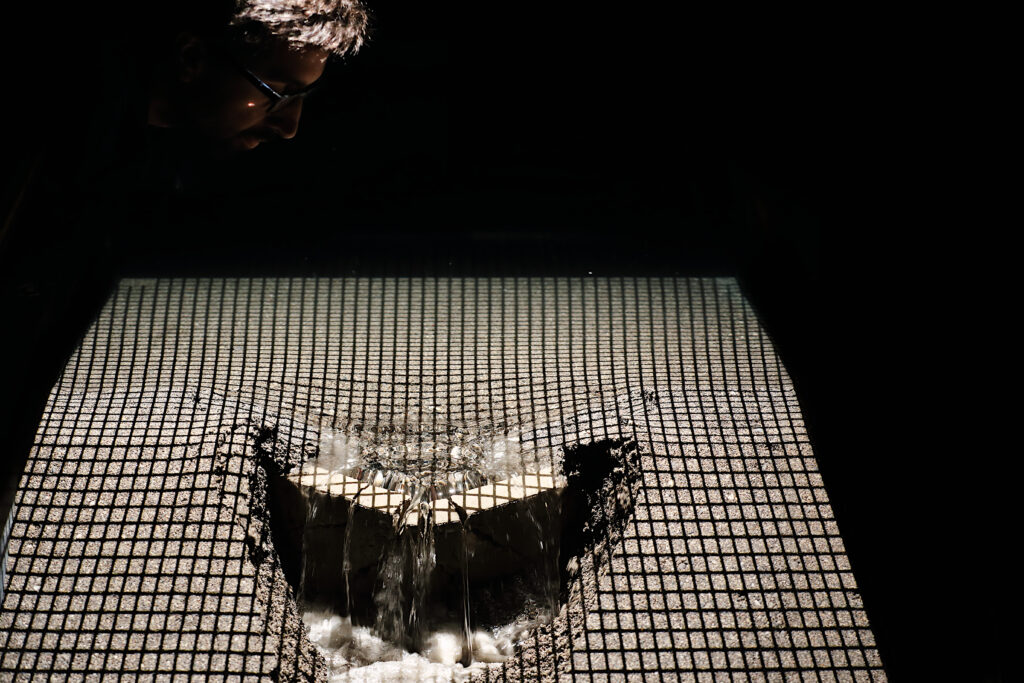Dam Integrity
Ensure that critical infrastructure is safe!
Hydropower plants can have large reservoirs that store water for months, allowing energy production to be shifted into the critical winter months. The water stored behind a dam can be destructive if released in an uncontrolled way. Keeping dams intact is therefore of paramount importance. Matthew Halso from the team of Robert Boes studies the processes that lead to the failure of an em- bankment dam. This will lead to better estimates
of the impacts of dam break floods, allowing for improved emergency management plans and risk assessments.
Switzerland is home to almost 700 dams nationwide. These pieces of infrastructure range in size, purpose, and age. Dams act as batteries holding back and then releasing water to a turbine to produce electricity when demand for electricity is high. Across Switzerland, 4 km3 of water is stored by these types of reservoir dams. Smaller dams control and manage the flow of water in order to produce electricity continuously (I.e., run-of-river hydropower plants). Taken together, the dams producing electricity provide approximately 57% of Switzerland’s electricity demand and offer Switzerland the ability to store energy. In addition, these dams hold back millions of litres of water and protect the communities of people living and working downstream. As a result, dams are considered critical infrastructure that must be protected and maintained.
Dams can become vulnerable for a variety of reasons including ageing, sabotage, and climate change. Some of the most active research concerns climate change. A hotter climate causes water flows in excess of dam design. Excess water comes in the form of precipitation that would have formerly accumulated as snow in the mountains and slowly melted during the spring. Another source of additional water flow is coming from melting glaciers. A topic the Energy Science Center’s member Professor Daniel Farinotti specialises in. Another risk arising from climate change is extreme events, including droughts, which can negatively impact these infrastructures. These new climatic pressures are increasing in frequency and intensity, putting strain on existing dams and generating the need for more dams and dam renovation.
Researchers within the Energy Science Center such as Professor Robert Boes and Professor Paolo Burlando assess risks from an engineering perspective as well as leveraging new scenarios on water flow patterns. Some other researchers within the ETH Domain at the Paul Scherrer Institute assess the risks associated with dams using historical data to perform statistical analyses. Still other researchers, within the ESC itself, consider hydropower from a larger system perspective on how hydropower resources should be used for an optimal energy system (e.g., ReMaP Project or Nexus-e)


